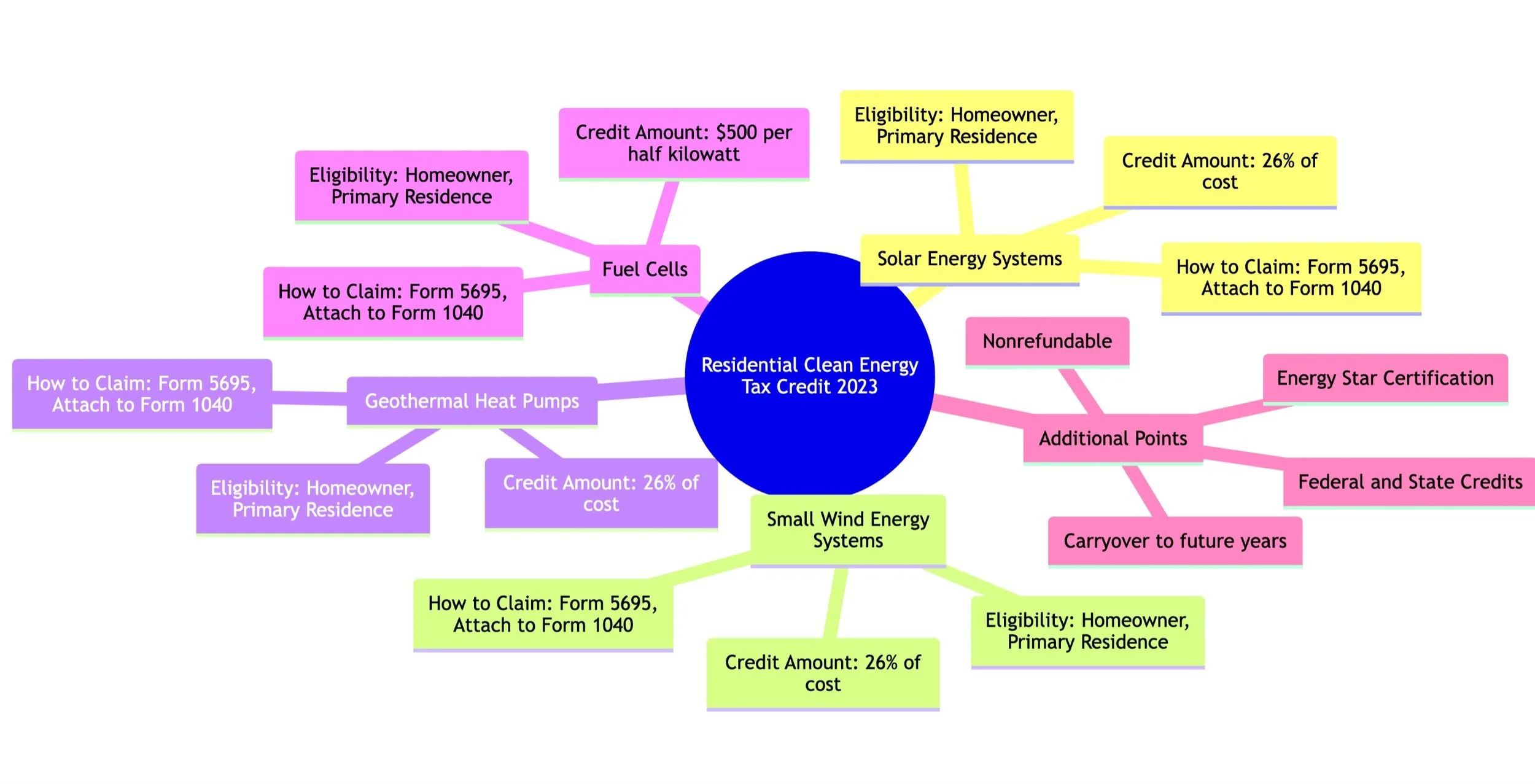Residential Clean Energy Tax Credit Guide
Introduction
The future is green, and so can be your home! The Residential Clean Energy Tax Credit for 2023 is a fantastic way to make your home more energy-efficient while getting a tax break. This article will walk you through the types of clean energy systems that qualify, the eligibility criteria, and how to claim this credit.
Types of Clean Energy Systems
Solar Energy Systems
Harness the sun's power to generate electricity or heat water.
Small Wind Energy Systems
Utilize wind turbines to generate electricity for your home.
Geothermal Heat Pumps
Use the earth's natural heat for heating and cooling your home.
Fuel Cells
Generate electricity through a chemical reaction without combustion.
Eligibility Criteria
Homeownership: You must own the home where the system is installed.
Primary Residence: The home must be your primary residence.
Credit Amounts by Type
Solar Energy Systems: 26% of the total cost
Small Wind Energy Systems: 26% of the total cost
Geothermal Heat Pumps: 26% of the total cost
Fuel Cells: $500 per half kilowatt of power capacity
How to Claim the Credit
Documentation: Keep all invoices, receipts, and certifications.
Form 5695: Complete IRS Form 5695, "Residential Energy Credits."
Attach to Form 1040: Include Form 5695 when you file your federal tax return.
Additional Points to Consider
Non-Refundable: The credit is non-refundable but can reduce your tax liability.
Carryover: Unused credits can be carried over to future tax years.
State Credits: Check if your state offers additional clean energy credits.
Conclusion
Investing in clean energy systems is not just good for the environment but also for your finances. Make sure to meet the eligibility criteria and follow the claiming process to maximize your benefits.

